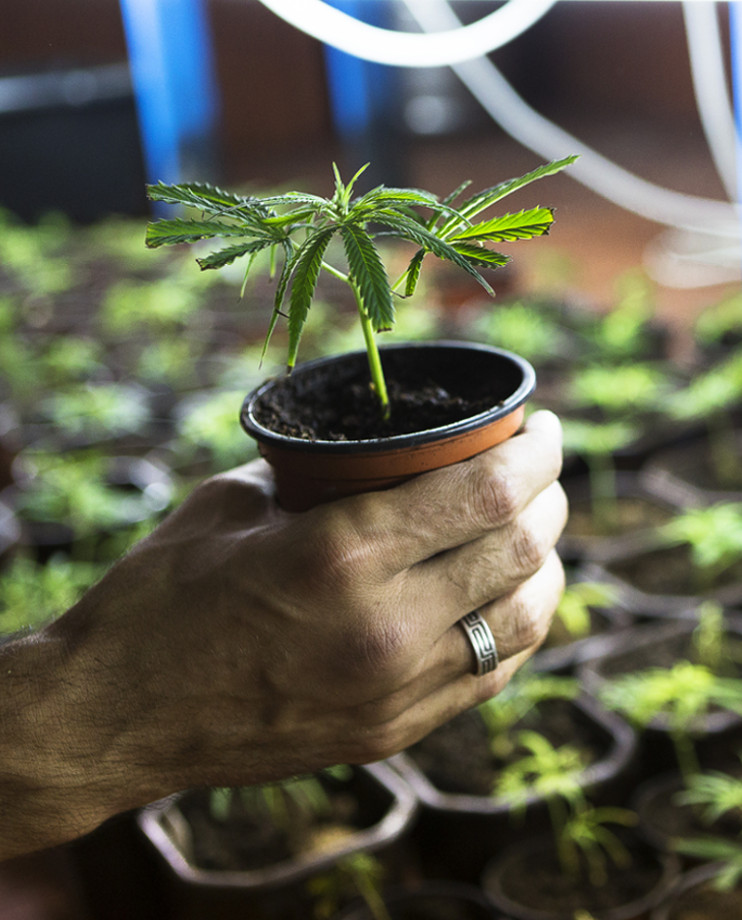Texas’ Compassionate Use Act is a limited medical marijuana program, allowing only patients with epilepsy to purchase CBD products, and the cannabis community isn’t happy about it.
Medical marijuana is due to go on sale in Texas by the beginning of 2018, but this for sure is no Green Rush. Texas’ Compassionate Use Act, passed in 2015, will only allow CBD formulations to be sold exclusively to patients with intractable epilepsy. Cannabis flower is prohibited under the program, and products may contain no more than .5 percent THC. Meanwhile, only three companies are licensed to grow and sell cannabis (from one vertically-integrated facility each) to serve an estimated 150,000 epilepsy patients throughout the state.
While it’s exciting medical marijuana will be legally grown at all in such a conservative state, says Heather Fazio, Texas political director for the Marijuana Policy Project, she fears the program may not be viable. “It’s unreasonably restrictive,” she says. “Flaws in the program lead us to be concerned that it won’t be fully operational.”
With so few storefronts (two of which are based in the Austin area), each dispensary/cultivation facility could hypothetically need to service tens of thousands of patients. But for now the statewide patient base is still relatively small. “It’s certainly an issue we’ve looked at,” says Morris Denton, CEO of Compassionate Cultivation, one of Texas’s three licensed medical marijuana companies, based just outside Austin.
“We started growing on Halloween and it will take 100 days before the extraction process, so we don’t know what our patient ramp will look like until early 2018,” he says. “We’re assuming it will be a conservative ramp, but it’s difficult to forecast what the demand will be. That’s one of the big unknowns right now that keeps me awake at night.”
While every patient surely won’t be able to visit one of the Lone Star State’s three dispensaries, the companies themselves will have the option to deliver the medicine. They can’t, however, hire outside distribution services.
Despite the program’s limitations, it does offer a sense of security to patients who may otherwise be at the mercy of trusting grocery store chains selling bunk CBD. “We’ve tested a lot of those products in our lab, and zero percent were accurate in terms of what they had on the label versus what’s in them,” says Denton.
“They’re garbage — but Joe and Jane Consumer who’ve heard of the wonders of CBD go to the supermarket, see something on the shelf, think it will be great, and then 99.9 percent of the time, it’s a placebo.”
Nonetheless, Denton, like most other cannabis industry folk and activists, supports expanding the program. “Texas as a conservative state has been more cautious with the inclusion of THC in their medical program, but we’ve seen other states like Florida that have gone rather quickly from a narrow market to a broad market from a medical perspective,” he says.
“Texas really likes to view itself as this maverick trendsetter state,” says Connor Oakley, legislative director of the Medical Cannabis Association of Texas. “There’s this sense of independence from the federal government in some way, so it makes sense to me that Texas is moving forward in this program, but they’re also very resistant to THC. Texas has been a battleground state in the movement.”
While even a CBD-only program is a step in the right direction, popular opinion seems to be ahead of the legislation. For instance, a number of cities in Texas, such as Houston, have passed “cite and release” ordinances for anything under four ounces of bud — meaning you won’t go to jail, but instead be subject to a ticket or court appearance. But that’s still a far cry from liberalizing the state’s medical marijuana program.
“Since it’s a border state, I think people are a bit more tense about anything they think is drug-related, but maybe they won’t feel that way as much when they see this program is successful and helping people,” Oakley adds. “I think Texas sets a precedent, so one can hope that they can watch what we’re doing in Texas and [what’s] happening in other states.”
As far as reforming the program, Texas’s legislature only meets every other year. It’s a safe bet that expanding the program — to include a broader range of patients and additional forms of cannabis — will become an issue during the 2019 session.
“Eighty-three percent of Texans are in favor of medical access [to cannabis]; even the [state] Republican party itself is open to making the program more inclusive and allowing doctors to decide whether a patient can use cannabis for medicine,” says Fazio. “Our goal is to add to the list of qualifying conditions and remove the cap on THC, which is arbitrary. It’s frustrating that legislators in Texas saw THC in cannabis as the boogieman.”
But above and beyond the limitations of Texas’s medical marijuana program, Fazio is also concerned about the December 8th expiration of the federal budget, which currently includes a provision (formerly known as the Rohrabacher-Farr Amendment) forbidding the Department of Justice from going after state-legal medical marijuana programs.




